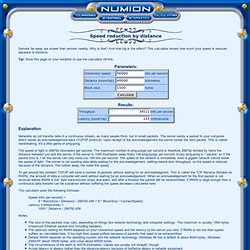

Solve Puzzles for Science. Complexity International - Volume 08. Application performance guarantee for business efficiency - Ipanema Technologies. Ferroelectric materials could bring down cost of cloud computing and electronic devices. A new class of organic materials developed at Northwestern University boasts a very attractive but elusive property: ferroelectricity.

The crystalline materials also have a great memory, which could be very useful in computer and cellphone memory applications, including cloud computing. A team of organic chemists discovered they could create very long crystals with desirable properties using just two small organic molecules that are extremely attracted to each other. The attraction between the two molecules causes them to self assemble into an ordered network—order that is needed for a material to be ferroelectric. The starting compounds are simple and inexpensive, making the lightweight materials scalable and very promising for technology applications. In contrast, conventional ferroelectric materials—special varieties of polymers and ceramics—are complex and expensive to produce.
In particular, the materials could help address the very expensive upkeep of cloud computing. The Evolution of x86 Server Architectures « IT 2.0. I spent a good 10 years of my IT career looking closely to hardware platforms (at IBM STG – Systems and Technology Group).

After more than two years focusing purely on infrastructure software (at VMware) I thought I wanted to share where I think we are headed with the design of x86 servers. We all know x86 is eating away other platforms’ marketshare. This shouldn’t be a shocking news. I wrote about it when I was at IBM working on these stuff. What’s interesting, in my opinion, is how x86 is eating that lunch. This discussion revolves around where value is being delivered by a given platform. That’s how those systems (non x86) are being thought and engineered at their very inception so there isn’t too much to say nor there is too much to talk about here.
In the x86 space it is very different: the design of those systems keeps changing over time depending on different input parameters. I see the x86 systems development a two-leg journey. . “… . …. Reference request - What Lecture Notes Should Everyone Read? - Theoretical Computer Science. Thesis. Bibliography of Declarative Networking and Related Topics. Paper0413. Perf benchmarks - RAMCloud Project - Confluence. SEDCL Retreat 2012 - Industrial Feedback Session - RAMCloud Project - Confluence. Speed reduction by latency. Speed reduction by distance Servers far away are slower than servers nearby.

Why is that? And how big is the effect? This calculator shows how much your speed is reduced because of distance. Tip: Save this page on your harddisk to use the calculator off-line. Explanation Networks do not transfer data in a continuous stream, as many people think, but in small packets. The speed of light is 299792 kilometers per second. To get around this problem TCP/IP will send a number of packets without waiting for an acknowledgment. The calculator uses the following formulas: Speed (bits per second) =
Memory Access Patterns are Important. Posted 16th August 2012 In high-performance computing it is often said that the cost of a cache-miss is the largest performance penalty for an algorithm.

For many years the increase in speed of our processors has greatly outstripped latency gains to main-memory. Bandwidth to main-memory has greatly increased via wider, and multi-channel, buses however the latency has not significantly reduced. To hide this latency our processors employ evermore complex cache sub-systems that have many layers. The 1994 paper “Hitting the memory wall: implications of the obvious” describes the problem and goes on to argue that caches do not ultimately help because of compulsory cache-misses. Let’s start putting the problem in context with some examples. Temporal: Memory accessed recently will likely be required again soon.Spatial: Adjacent memory is likely to be required soon.Striding: Memory access is likely to follow a predictable pattern. Code The following code should be run with the -Xmx4g JVM option.